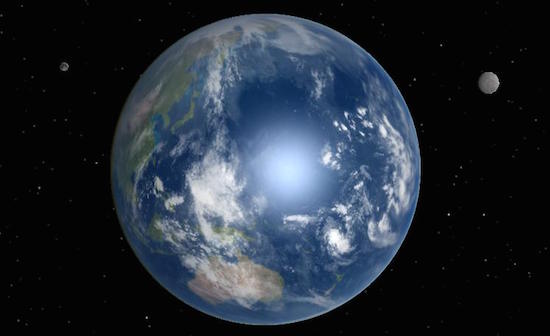Even astronomers didn’t realize it was following the earth until 1997. The moon isn’t alone in the sky. Sure, we’ve launched hundreds of man-made objects into the space around Earth, but even before we got there, earth and moon had a little companion. This tiny, rocky world is named 3753 Cruithne, which comes from Old Irish and refers to the early Irish people as their king, Cruidne. You can forgive your parents and your grade school teachers for not mentioning it though: The object was only discovered in 1986 and its orbit mapped in 1997.

Cruithne is technically not a moon but a quasi-orbital satellite of earth. Duncan Forgan, a researcher at the University of St. Andrews, in Fife, Scotland, explains: “This simply means that Cruithne doesn’t loop around the earth in a nice ellipse in the same way as the moon, or indeed the artificial satellites we lofted into orbit. Instead, Cruithne scuttles around the inner solar system in what’s called a “horseshoe” orbit.
To help understand why it’s called a horseshoe orbit, let’s imagine were looking down at the solar system, rotating at the same rate as the earth goes around the sun. From our viewpoint, the earth looks stationary. A body on a simple horseshoe orbit around the earth moves toward it, then turns around and moves away. Once it’s moved so far away it’s approaching Earth from the other side, it turns around and moves away again.”
Here’s a video of the wacky loops that Cruithne’s orbit traces in that imagining:
but if you look down on the solar system from above the sun and watch both the earth and Cruithne spin through space, it looks like this:
It takes Cruithne 770 years to wobble in its horseshoe shaped movement around the earth. The object can be thought of as an asteroid caught up between the Earth’s orbit and its own around the sun or as a minor planet. It does take Cruithne about 364 days to go around the sun – so that’s why it appears to follow the earth and also why it’s been called poetically our “second moon.”
